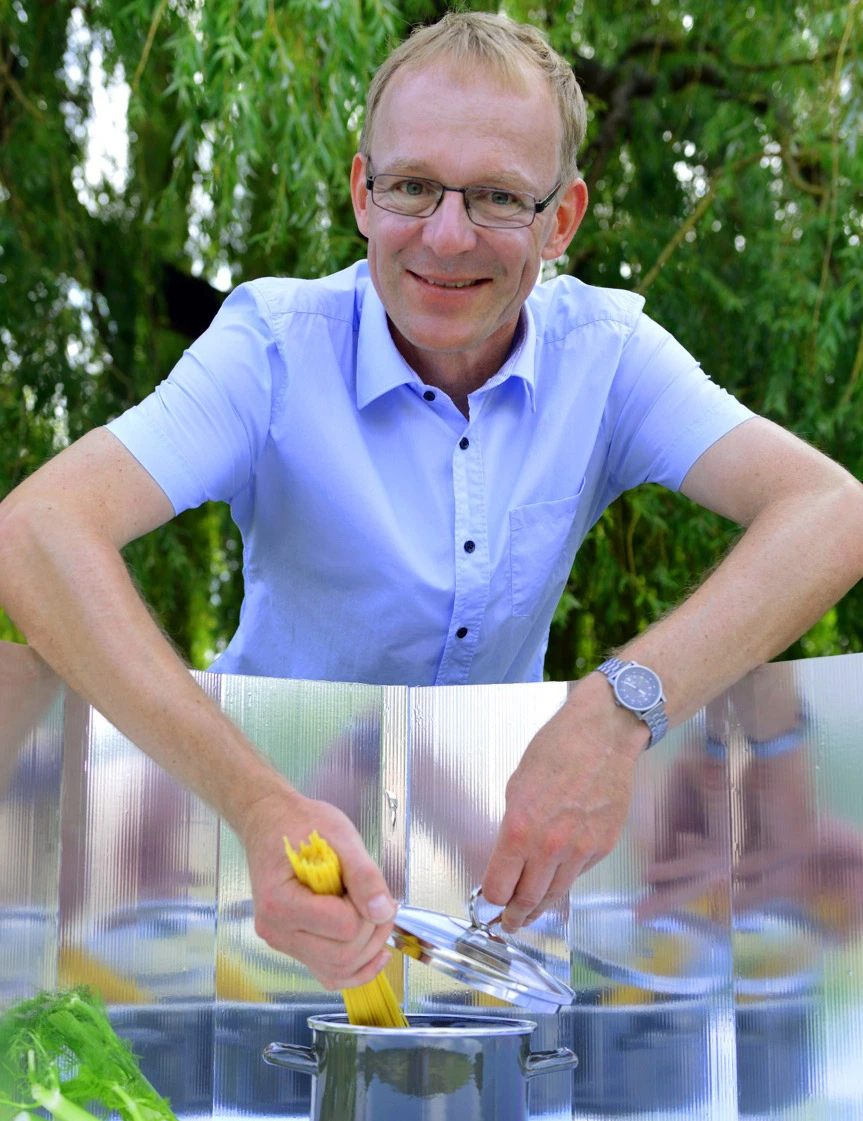Using Sunlight Alone
Hartmut Ehmler builds handheld solar-powered cookers
Maybe he would have never had the idea, if it wasn’t for all that trouble with the camping stove. “A big old box, much too bulky. The thing filled the whole boot. Something had to be done,” Hartmut Ehlmer said to himself.
It’s been five years since that fateful camping trip with his son. Since then, Ehmler has spent “many hours on the balcony and in the basement” fiddling and tinkering. The results can be seen on his website “lightoven.de”. A solar-powered water cooker that is light and portable, no bigger than a file when folded up, and fits easily into a pannier.
A lay person hears solar-powered cooker and thinks of a device which uses the power from sunlight to heat a stove. Not a great idea, says Ehmler. With a “comparably low efficiency” of about 20%, solar power is “energetically unfavourable” for cooking. The technology used by his cooker is much easier and also, so he says, much more efficient. A parabolic mirror focuses the sunlight and produces the heat for cooking. Fifty percent of the light’s energy is transformed into heat using this method.
This subject has run like the proverbial thread through Ehmler’s career: “I have always been fascinated by energy.” The 47-year-old already lived through a phase when generating heat from sunlight was an important topic for him – when he studied physics in Göttingen and Kiel a quarter-century ago. He wasn’t as successful back then: “It never really got warm.”
After getting his PhD, Ehmler worked at the Max Planck Institute for Plasma Physics – the science of very hot gasses – in Greifswald. He has now been at the Berlin-based Helmholtz-Centre for 8 years. For one year now, he has been coordinating the modernization of the synchrotron BESSY II, a particle accelerator operated by the Helmholtz-Centre in Adlershof.
Adlershof was also the place where Ehmler discovered the raw material for his solar cooker. He noticed the placards hanging from every lamp post, which advertise science slams, events at the cooking studio, or the “Long Night of the Sciences”. They are made of polypropylene, a type of plastic which is an ideal material for forming parabolic mirrors: “The placards get a second life – and a better one, too,” Ehmler quips. Let’s be honest, what is the existence of a placard compared to a device to help prepare a meal?
Naturally, such a cooker has its disadvantages. It can only be used in strong sunlight. Sometimes two hours go by before it reaches its maximum temperature of 160 degrees. At least, the cooker can be left to its own devices during this time without having to worry about burnt food. According to Ehmler, the main thing is that the cooker fosters a new way of thinking. Not: when is this finally done? Instead: let time work for me.
By Winfried Dolderer for Adlershof Journal
